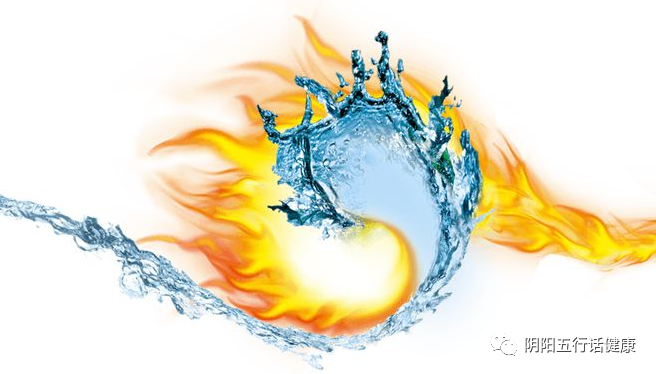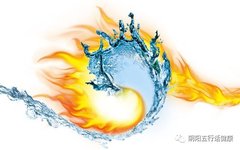This guiding method is the favorite practice of this practitioner, named “Fu Guang Zhi Mang” (The Radiance of the Initial Light), which I do not wish to reveal to others. Today, at the request of a friend, I present this method to the public, hoping that those who indulge excessively will restrain themselves, and I also hope it will be of some use to friends who are left with only pain and physical ailments, as well as to communicate with fellow practitioners.
Ancient sages often spoke of nourishing the kidneys as the foundation, while modern people often speak of enjoying the pleasures of the kidneys, hence the prevalence of kidney deficiency as a condition.
It is well known that excessive indulgence harms the kidneys, especially when such indulgence is pursued without restraint, leading to a loss of kidney essence. The liver loses its nourishing yin, bile energy becomes stagnant, and the spleen and stomach become unbalanced. Gradually, heart failure and shortness of breath occur, as the kidneys are unable to receive qi. There is weakness in the lower back and legs, movement feels like a struggle, and willpower alone cannot support it; the qi of the kidney meridian must be replaced by the qi of the spleen. The pulse becomes bound and intermittent, heart rate becomes irregular, and one cannot avoid peculiar temperaments!
The harms of excessive indulgence are difficult to fully describe; the treatment of this condition has long been accumulated and evolved into a systematic discipline!
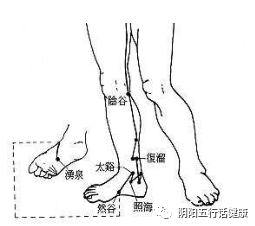
(1)
To guide the qi of the kidney meridian, one must calm the mind and spirit, removing fear to stabilize the internal organs’ qi. If the mind is not calm, one should not force the guidance. It is advised to repent for past wrongful actions to achieve a tranquil body and mind.
Lie flat, cover yourself. Spread your limbs, with palms facing down. Take deep breaths, focusing on the line from the edge of the palms to the little toes. After a moment, feel the body and mind become calm.
Focus on the area below the inner ankle and the back side of the inner ankle. When you feel qi descending to this area from the inner side of the lower leg, focus on the Yong Quan (Kidney 1) point, where the cool kidney meridian qi will reach from the inner ankle to the Yong Quan. You will suddenly feel drowsy, as the qi of the kidney meridian has been stimulated from its root. If the kidney qi is too weak and you cannot feel the qi sensation, you must use acupressure techniques (gently press the Tai Xi (Kidney 3), Da Zhong (Kidney 4), and Shui Quan (Kidney 5) points with your thumb). Hold this position until the sensation at the Yong Quan point becomes apparent. Focus on the Hui Yin (Perineum) point for a while, and the kidney qi will rise along the meridian.
At this time, the meridian qi is open but still weak; it is advisable to gently guide the meridian qi with your breath along the inner sides of the thighs and lower legs back and forth between the Hui Yin and Yong Quan points until the meridian qi flows freely. Focus on the Hui Yin point, and when you feel warmth in the perineum, you can shift your focus to the two kidney areas, guiding the qi to reach the kidneys. At this point, use your breath to guide the qi back and forth between the kidney area and the Yong Quan point with long, deep breaths. When you feel it is smooth, you can stop guiding with your breath and simply be aware of the sensation.
As the qi reaches the kidneys, you should carefully observe any sensations of swelling, pain, or itching in the kidney area, indicating the depth of kidney deficiency.
(2)
When the qi of the kidney meridian has circulated and the pain diminishes or disappears, hold the two kidney areas, gradually feeling a sense of fullness, slight pain, and heat between the two kidneys, as the yang energy concentrates. At this time, the true yang energy of the kidneys is ignited! It is advisable to hold this sensation and strengthen it. If you feel satisfied, bend your arms, keeping your elbows level with your shoulders. Using your elbows and heels as support, try to lift your body off the bed.
Repeat this action three times to consolidate the qi in the kidneys, then get up.
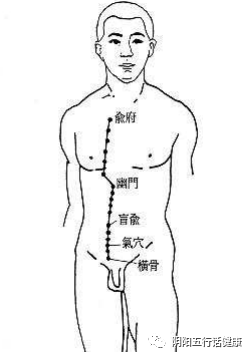
(3) Second Stage. Allow the awareness and breath to naturally connect the Yong Quan to the kidney area, holding the kidney area for a moment, then moving from the lower back to the Ming Men (Gate of Life) point, stimulating and concentrating the yang energy. This interacts with the stomach’s Yangming meridian, warming the Jian Li (Ren 12) and Zhong Wan (Ren 10) points. The front and back yang energies reflect and resonate with each other, gradually strengthening; simply hold this sensation. At this point, the fire of the innate Ming Men has been ignited, and the postnatal spleen and stomach yang energy begins to grow stronger. Appetite increases, and energy starts to recover. Maintain a calm and nurturing state.
Still feeling the heat from the Ming Men and abdominal yang, gradually sense the yang energy descending in the abdomen, warming the perineum and bladder. Hold this for a moment. After the yang heat of the bladder is stimulated, it travels from the Yang Guan (Bladder 2) point to the lower back, feeling full and warm, concentrating up and down. This facilitates the transformation of the bladder’s true yang into qi, providing a source for the yang energy. Shortly after the front and back energies interact, the true yang energy in the chest is revitalized, and a warmth rises from the chest. Hold this source of qi, waiting for the natural stimulation of the true qi in the Yang point of the Du Mai (Governing Vessel), and hold this sensation. Soon, the qi of the Du Mai will slowly move up and down, eventually connecting through the Du Mai. Do not guide it with your breath; simply observe its movement.

(4) After connecting the Du Mai, the qi will concentrate along the back and reach the top of the head. Saliva will be produced in the mouth, continuously swallowed. Then, the qi will flow through the meridians of the head and face, reaching the ears, nose, eyes, mouth, and lips. Next, it will concentrate at the shoulder and neck, and then to both hands. At this point, both hands should be placed on the abdomen, left hand below and right hand above, palms facing each other.
After a while, the qi will flow through the upper arms, feeling the sensation in the ribs. Hold the ribs, and the qi will flow from the sides down to the lower abdomen. Focus on the hip area, and the qi will flow down to the lower limbs. At this moment, the whole body feels neither inside nor outside, and is warm all over.
Finally, the qi will settle at the two temples. Stand in a horse stance, feet shoulder-width apart. Squat down, lowering your center of gravity. Relax the toes of both feet, avoiding gripping the ground.
Both palms should bend the thumbs, forming a cross (left outside, right inside), about half a foot from the face, and hold this position. Focus your intention on the little fingers and the edges of the palms, extending to the outer sides of the arms and the peaks of the shoulders and the upper edges of the shoulder blades (which correspond to the hand’s Tai Yang meridian), starting from the little fingers and guiding the breath along the meridian. When the intention and qi are unified, initiate the movement: exhale, and with the shoulders as a pivot, move the hands and arms outward. Stop when the arms are level with the shoulders, pushing the palms outward, and take a deep breath. As you exhale again, bring the palms together in front of the shoulders, stopping at the front of the shoulders. Repeat this five times.
With the palms in a cross position in front of the lower jaw, push forward while exhaling; then retract while inhaling. The qi will descend to the abdomen.
At this point, the true yang qi of the whole body has penetrated through. The practice is complete. You may gently massage the ribs and the line of the stomach meridian. Finally, rub the face with both palms, inserting the fingers into the hair to comb, and massage the Feng Chi (GB 20), Feng Fu (GV 16) points and nearby areas.
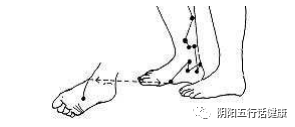
This complete set of guidance methods can be practiced in stages at first. Once proficient, it can be done once a day or every other day, preferably in the afternoon or early evening.
When encountering fellow practitioners, one should be aware of the level of skill achieved. Do not mix with other practices. I hope those interested in cultivation will cherish this! It is sufficient for a lifetime of nourishment!
As for the other two yang meridians of the arms, they are not within the scope of health preservation, so I will not discuss them for now.
Appendix: Diagram of the Kidney Meridian Pathway
Pathway: Begins below the little toe, travels to the sole of the foot, follows the inner ankle up the thigh, penetrates the spine, belongs to the kidneys, enters the bladder, ascends to the lungs, follows the throat, and connects to the root of the tongue, with branches emerging from the lungs to connect to the heart.
Assisting Actions for Igniting the True Yang Fire
Ordinary people often have insufficient kidney qi, making it difficult to maintain. Moreover, the peak activity of the kidney meridian does not occur during the daytime when the body is most active. Therefore, igniting the true yang fire emphasizes lying down, using the Yang bladder meridian to draw in the yin, stimulating kidney qi.
However, for those who are fatigued and depleted, once the kidney qi is stimulated, they often fall into a deep sleep, making it difficult to practice any skills. Of course, deep sleep is a very good form of health preservation, leading to abundant energy the next day.
Now, I provide a simple kidney meridian guiding action to promote the smooth flow of the kidney meridian. Choose a low stool, like a small chair for kindergarten children.
Sit with your legs apart, feet firmly on the ground, and your hands loosely clenched into fists, with the fist openings facing each other, and the forearms parallel, with the elbows outside the ribs.
Inhale, lightly focusing on the soles of the feet and the two kidneys. As you fill your lungs, keep your arms still; within the secret yoga of the middle channel, there is a method called “Zhuo Huo Ding” (Fixed Fire), which is said to be difficult. I have experienced it during my leisure time and have some understanding.
—– Hold the soles of your feet.
Connect the soles of your feet with the energy point of yoga (the root chakra at the base of the spine).
However, the breath should flow along the upper and lower Shao Yang meridians.
Thus, after calming the heart, the root chakra (located just above the anus and below the genitals) connects to the heart’s pericardium and the Bai Hui (GV 20) point, forming a line.
This is the pathway of the middle channel.
With slight practice, the palms and face will feel warm, and you will immediately connect with the middle channel.
However, it is essential to cultivate compassion and desirelessness. Otherwise, the qi will rise and disturb the Bai Hui.
Any yoga or esoteric masters are welcome to provide guidance!
Why ignite the true yang fire?
Igniting the true yang fire is the gateway to self-care!
Zhang Ziyang in “Wu Zhen Pian” pointed out: “The Dao arises from the void, giving birth to one qi, which then produces yin and yang.” This speaks of a tranquil state and the changes in the body’s meridians and blood flow within that tranquility. Once the true yang fire is ignited, the phenomena of coolness and heat in the meridians will manifest.
Later, modern scholars have made it clearer: during the time of life, one yang is born. The warm energy of yang is generated.
What specific areas are closely related?
The emergence of “one yang” indicates that the innate qi within the human body has been activated. In modern medical terms, this corresponds to enhanced gonadal function and increased secretion of sex hormones. Sex hormones are closely related to anti-aging and rejuvenation in the body. Especially for the elderly, after passing this threshold, some may even experience miraculous changes such as hair turning from white to black and teeth regrowing.
Thus, it is evident that the kidneys play a crucial role; when kidney qi is sufficient, it affects the response of the organs.
Coincidentally, Indian yoga also emphasizes stimulating the important acupoints of the kidney system to generate heat.
Yoga practice focuses on guarding and intention, waiting for the “Zhuo Huo” (Fixed Fire) to ignite and the spiritual heat to arise, entering the state of Fixed Fire.
What is the connection of the root chakra? The root chakra is located between the genitals and the anus, at the base of the spine, where the perineum point is situated. It is evidently still closely related to the kidneys.
What causes various schools to emphasize the generation of warm energy and warmth in tranquility?
Let us see how the great masters of traditional Chinese medicine have discussed this.
“Su Wen: On the Ancient Heavenly True” states: “The kidneys govern water, receiving the essences of the five organs and six bowels and storing them.” The essence of the postnatal qi relies on the support of the innate essence, while the innate essence also needs the nourishment of the postnatal essence. The essence and qi of the organs are abundant, and through the spleen’s transformation and distribution throughout the body, the remaining part is combined with kidney qi and stored in the kidneys. When the body develops to a certain stage and the reproductive functions mature, the kidney essence can transform into reproductive essence. It can be seen that the innate and postnatal essences can mutually nourish and transform each other.
This is the core role of the kidneys in life activities.
The primary physiological function of the essence in the kidneys is to promote the growth, development, and reproductive capacity of the body. The “innate essence” stored in the kidneys is the foundation of human growth and development, while the “postnatal essence” is the material basis for sustaining life.
Therefore, nourishing the kidneys and using the kidneys for health preservation is generally based on this foundation. The processes of life, growth, maturity, aging, and death are all related to the rise and fall of the essence in the kidneys.
“Su Wen: On the Ancient Heavenly True” describes the evolution of the essence in the kidneys from being insufficient to gradually becoming abundant, and from abundance to gradually declining and eventually depleting, stating: “At seven years old, the kidney qi is abundant, teeth grow and lengthen. At fourteen, the Tian Gui (Heavenly Water) arrives, the Ren Mai (Conception Vessel) is open, the Tai Chong (Liver 3) is abundant, and menstruation occurs regularly, hence the ability to conceive. At twenty-one, the kidney qi is balanced, hence the true teeth grow and reach their peak. At twenty-eight, the tendons and bones are strong, hair grows to its peak, and the body is robust. At thirty-five, the Yangming meridian declines, the face begins to wither, and hair begins to fall. At forty-two, the three yang meridians decline in the upper body, the face becomes withered, and hair begins to turn white. At forty-nine, the Ren Mai is deficient, the Tai Chong meridian declines, the Tian Gui is exhausted, the pathways are blocked, hence the body deteriorates and cannot conceive. At fifty-six, the kidney qi is strong, hair grows and teeth lengthen. At sixty-four, the kidney qi is abundant, the Tian Gui arrives, essence overflows, yin and yang harmonize, hence the ability to conceive. At seventy-one, the kidney qi is balanced, tendons and bones are strong, hence the true teeth grow and reach their peak. At seventy-eight, the tendons and bones are robust, and the muscles are full and strong. At eighty-five, the kidney qi declines, hair falls and teeth decay. At ninety-two, the yang qi declines in the upper body, the face withers, and hair turns gray. At ninety-nine, the liver qi declines, tendons become immobile, Tian Gui is exhausted, essence is scarce, kidney storage declines, and the body reaches its limit. At one hundred and six, the teeth and hair are lost.” This illustrates the phenomena of growth and development as the essence in the kidneys gradually becomes abundant.
The kidneys house true yin and true yang, serving as the root of the body’s yin and yang. “Liu Jing Fu Yi: Seeking the Right Record: Differentiation of the San Jiao and the Ming Men” points out: “The Ming Men is the residence of water and fire, the dwelling of yin and yang, the sea of essence and qi, and the gateway of life and death… This is the great foundation of life.” It also states: “The yin qi of the five organs cannot be nourished without this, and the yang qi of the five organs cannot be activated without this.” The fire of the Ming Men is true yang, and the water of the Ming Men is true yin. True yin and true yang are stored in the kidneys, serving as the source of yin and yang for the five organs and six bowels.
The deficiency of yin and yang in the kidneys can affect the five organs, and damage to the five organs can also “ultimately affect the kidneys.” For example, if kidney yang is deficient and cannot warm and transport the spleen’s earth, it can lead to spleen yang deficiency, resulting in symptoms such as diarrhea and morning diarrhea. Conversely, if spleen yang is insufficient, it will eventually affect kidney yang, leading to the syndrome of spleen and kidney yang deficiency.
In the Ming Dynasty, Zhao Xian Ke proposed: “Outside the five elements of the human body, there is another formless fire and formless water, residing between the two kidneys, hence it is said that among the five organs, only the kidneys are true.”
“Ji Sheng Fang: Supplementation” states: “If a person does not take care of themselves, excessive labor leads to true yang deficiency, the Kan fire does not warm, and cannot steam the spleen’s earth… This is all due to the deficiency of true fire, which cannot steam and nourish the spleen’s earth.”
“Yi Guan: On the Twelve Organs” states: “The Ming Men is located between the two kidneys, at one inch and five tenths, within the body. The “Nei Jing” states, ‘Beside the seven sections, there is a small heart in the middle,’ which is the Ming Men, the true lord and master, the supreme ultimate of the body, which is invisible, and the two kidneys are its residence.”
In the Ming Dynasty, Sun Yi Kui believed that the Ming Men is located between the two kidneys, neither water nor fire, but merely a mechanism for the activation of the original qi, a hub of life and transformation, as stated in “Nan Jing: Eight Difficulties” regarding the “Qi Movement between the Kidneys.”
He pointed out in “Yi Zhi Xu Yu: Diagram of the Ming Men” that: “The ancient physician (Bian Que) also said: ‘The qi movement between the kidneys is the life of a person, the foundation of the five organs and six bowels, the root of the twelve meridians, the gateway of respiration, and the origin of the three jiao.’ The meaning of the Ming Men is based on this… The Ming Men is the qi movement between the two kidneys, neither water nor fire, but the hub of transformation, the root of yin and yang, the innate supreme ultimate.”
From the perspective of life systems theory, the material basis of the Ming Men comes from the “true essence” of the parents; it is the fundamental state of human life, a concentration of early life systems, containing certain fine regulatory mechanisms and coding systems of the human body.
From the treatment experiences of various medical practitioners throughout history, it is known that the true fire of the Ming Men is essentially a summary of the biochemical energy system of human life.
It is evident that guiding the kidney meridian, strengthening kidney qi, and igniting the true yang fire of the Ming Men is the key to health preservation.
